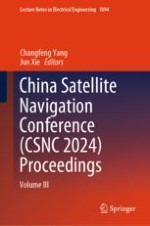2024 | OriginalPaper | Buchkapitel
BDS-3/GNSS Multi-frequency PPP Rapid Ambiguity Resolution
verfasst von : Lijun Yang, Guofu Pan, Xiang Zuo, Jinsheng Zhang, Zhihao Yu
Erschienen in: China Satellite Navigation Conference (CSNC 2024) Proceedings
Verlag: Springer Nature Singapore
Aktivieren Sie unsere intelligente Suche, um passende Fachinhalte oder Patente zu finden.
Wählen Sie Textabschnitte aus um mit Künstlicher Intelligenz passenden Patente zu finden. powered by
Markieren Sie Textabschnitte, um KI-gestützt weitere passende Inhalte zu finden. powered by
